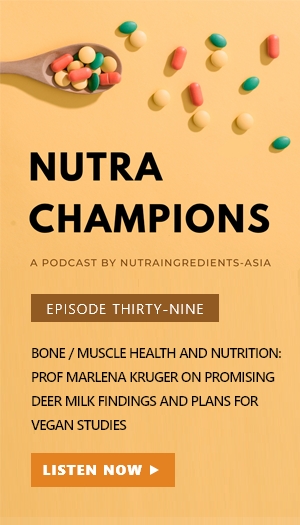Three-out-of-four pregnant women in China have vitamin D deficiency: Official data

Furthermore, it has been found that pregnant women from big cities are far more likely to be at risk of both vitamin D and A deficiency than those from smaller conurbations.
Researchers from the National Institute for Nutrition and Health in Beijing evaluated the prevalence of anomia and the nutritional status of vitamins A and D by analysing haemoglobin, serum retinol, and serum 25-hydroxyvitamin D levels in Chinese urban pregnant women during 2010-2012.
Data was obtained from the China Nutrition and Health Survey in 2010-2012, with 2250 pregnant women from 34 major cities and 41 middle-sized and small cities included in this study.
“The haemoglobin, serum retinol, and serum 25-hydroxyvitamin D levels were compared, along with differences in the prevalence of anaemia, vitamin A deficiency, and the vitamin D deficiency rate (including deficiency and serious deficiency),” they wrote in the Chinese Journal of Preventative Medicine.
A total of 1,738 cases of haemoglobin level, 594 cases of serum retinol level, and 1,027 cases of serum 25-hydroxyvitamin D were available for analysis in the study.
The overall prevalence of anaemia was 17%, with higher rates recoded in metropolis locations.
Significant difference
In terms of vitamin A deficiency, the overall prevalence was 7.4%: 11.5% for big cities and 4% for middle-sized and small cities.
“A significant difference was also observed in the vitamin D level between metropolis and middle-sized and small city residents,” they wrote,
The overall prevalence of vitamin D deficiency was 74.3%.
A significant difference was observed in the prevalence of serious vitamin D deficiency between major cities, 30.64%, and middle-sized and small city residents at 26%.
One positive finding reported was that the prevalence of anaemia had reduced in the decade to 2012.
The study concluded: “The prevalence of anaemia in Chinese urban pregnant women improved from 2002 to 2012. The prevalence of vitamin D deficiency in pregnant women was generally more serious. The prevalence of vitamin A deficiency and serious vitamin D deficiency among pregnant women from metropolis was significantly higher than that of pregnant women from medium and small-sized cities.”
Last week we revealed the top five supplements taken by pregnant women in China, and why academics think more needs to be done to boost their use.


















